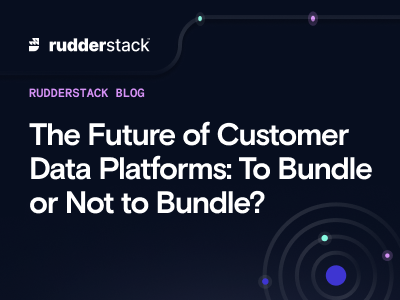How CPG Brands Can Master the Art of Decision-making With Connected Data
March 20, 2023Businesses face unpredictability constantly, and much of it out of their control. You might not be able to change what’s happening, but you can change how you react to it, and the decisions you make.
This is how host David McCarty, a CPG industry consultant, kicked off the webinar, “Mastering the Art of Decision-Making with Connected Data and Accessible Insights.”
Joining McCarty on the webinar was a panel of CPG experts, including Justin Honaman, head of worldwide CPG and retail GTM at AWS, Greg Bistany, global Director, Salesforce industry lead at Slalom, and Danica Konetski, consumer industry principal at Treasure Data.
Decision-making Challenges
Konetski shared a few interesting stats from a recent Treasure Data study of 1,500 decision-makers. Fifty-seven percent of respondents are spending more time making decisions, despite the pressure to react more quickly.
Even though decisions are taking more time, many leaders are not seeing improvements in outcomes. Konetski said this is not from a lack of data, but from a lack of the right insights at the right time.
“I think the struggle there is, yes, we’re collecting the data, but are we serving it up in a timely fashion, and in a way that is directive to the people who are making these decisions? I think it’s like an unvirtuous cycle,” Konetski noted. “These things are compounding; more process, more people, more data, but in a way that isn’t furthering or best supporting decision making.”
This challenge points to the need to think harder about the decisions leaders need to make, the insights needed, and the data required to support making the right choices.
Leveraging Data Properly for Better Decision-making
According to Honaman, data analytics have been important for a long time, and will continue to be important for CPG brands. Most major brands grew through acquisition, and backend technologies are not connected, leading to challenges with getting a complete view of the customer, and operations.
There’s a real opportunity for solutions, investment in artificial intelligence and machine learning, and new analytics to help resolve these challenges. That’s where a customer data platform (CDP) can help.
From an ROI perspective, CPG brands should do three things:
- Find value in their investment in first-party, second-party, and third-party data. Focus on improving return on ad spend, lowering customer acquisition costs, and increasing customer lifetime value (CLV).
- Own their data and the insights that go with it.
- Create differentiated customer experiences.
“When you think about the metrics, you’re looking at things like revenue growth, right?” Honaman said. “You’re looking at customer lifetime value–you do have those relationships. Where you have a direct-to-consumer platform, you’re looking at average order value, you’re looking at market penetration in different geographies, and there are some CPG brands doing really, really good work around direct-to-consumer in different geographies. And the last would be around CSAT scores for a consumer experience. So that’s a couple of the metrics that would go along with having a CDP platform.”
Konetski offered some examples of ROI from several Treasure Data customers, including an 88% reduction in the cost of acquisition (or a reduction of $35 million), a 3x conversion rate, and an increase of 25% in cross-selling opportunities.
Connecting Your Data for New Opportunities
It’s important to track and measure value over time, and be prepared to course correct as you learn and grow. Having connected data opens new opportunities for a brand to expand their focus and how they go to market.
Bistany, who works with clients to maximize ROI with connected data, noted that you’re behind the curve if your organization hasn’t started some initiative to connect your data.
“And it’s not about trying to catch up at this point. It’s trying to figure out how to leapfrog your competition,” Bistany said. “One way you do that is by connecting where your front-and-back offices are coming together.” Bistany also noted that most challenges are non-technical. It’s often a lack of experience or difficulty aligning on strategy or priorities. According to Bistany, you need experience, passion, and an executive champion to overcome these challenges.
Even Smaller Companies Can Invest in Data Analytics
A large enterprise has the scale and the data, especially a lot of first-party data. But what about smaller companies? How do they achieve a return on investment?
Small-to-medium-sized businesses do not typically have dedicated data analysts or data integration teams. But what’s exciting is that the technology has evolved, and cloud capabilities enable companies to spin up services quickly as self-service tools. As a result, they don’t need a large IT investment in terms of time and resources to set up a customer data platform.
Where companies might need help is with data integration. But there is a large ecosystem of partners out there that can help.
Konetski pointed out that over 20% of Treasure Data’s customers have under one million profiles in their CDP. She said you are never too small to be smarter, and there are many out-of-the-box capabilities and pre-built integrations to get you up and running quickly.
Larger companies often struggle with technical debt (legacy systems that aren’t easily replaced) and a mindset of doing things “the way we’ve always done it.” Smaller companies don’t have that challenge—they are more open to innovation.
Overcoming Data Challenges
Ultimately, CPG companies can unlock data and discover insights to understand their customers and power better decisions. The panelists discussed the challenges CPG companies face around data—trying to do everything at once or thinking that data needs to be in a perfect state, which can lead to analysis paralysis. Some key ways to address these challenges include:
- Outline how you plan to use the data, or you’ll get stuck just trying to implement the technology.
- Determine–and prioritize–the data sources you actually need to create a customer data foundation
- Aim for use cases that can yield results in less than 120 days, to show results quickly.
To discover the right use cases, you need to look at the external to internal view from the customer’s perspective. When you start to piece together the use cases for your audience and customers, you can figure out what will be valuable to them. From there, you can understand how to use a customer data platform to provide the right insights and create a truly connected customer experience.
Watch the webinar replay on demand to hear valuable insights from the panelists. To learn more about the ways marketers are making better decisions while facing data and ROI challenges, explore our recent report, Better Decisions: A spotlight on data efficiency.


